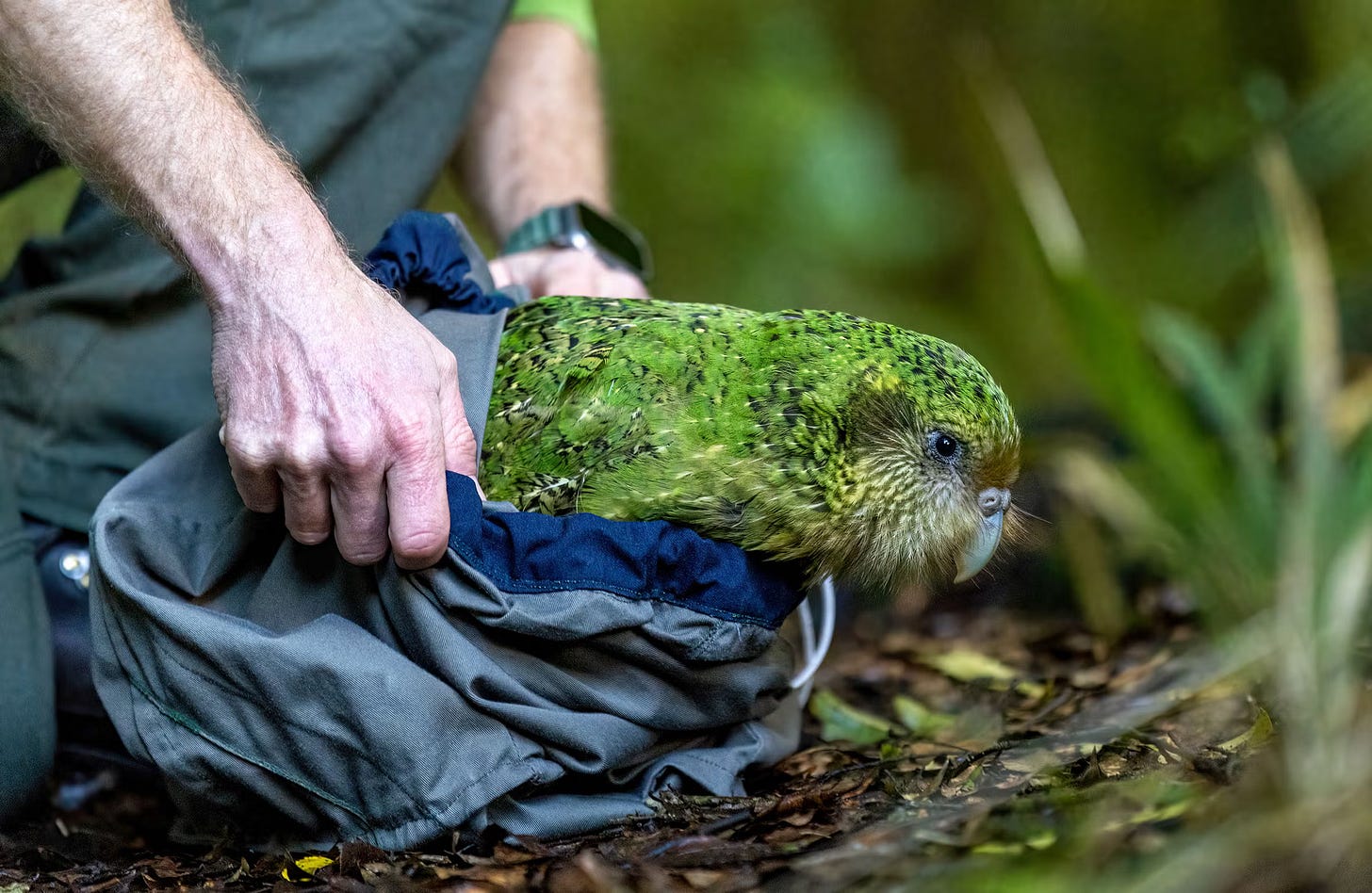
Hello everyone:
The writing will take you to New Zealand this week, but I’ll start the journey with a few paragraphs about the cruel chaos coming out of D.C.. For those of you who want a break from all that, skip down past the picture of harried sheep. For those of you who wish I was focusing more on the anti-environmental bloodsport of the Trump administration, I’ll get there. That reality is an ultramarathon, not a sprint, and I do try to keep something of a global perspective here.
As always, please remember to scroll past the end of the essay to read this week’s curated Anthropocene news.
Now on to the writing:
We now live amid the deliberate chaos of a new Trump administration and its determination to increase suffering in the world. A small, irrational, but quite powerful amalgam of Christian nationalists, white supremacists, fossil fuel execs, tech billionaires, and other corporate interests, are working with a well-publicized but little-read blueprint to create an autocratic state motivated by greed and grift, profit and power, half-witted vengeance and quarter-witted notions of racial and gender purity. It’s not what many Trump voters were asking for, but it’s what we’re getting.
This may be four more years of living in a house with the political equivalent of an angry drunk - with okay days and bad days - or it might be worse. As a brilliant observer explains,
Authoritarianism is just domestic abuse writ large. It uses the same tools and the same logic and, honestly, the perpetrators are often the same damn people.
You can add your own observations to this analysis, I’m sure. I’ll add my own on another day. I’m still circling this new reality rather than fully diving in. If you want to look more closely, read
’s excellent “How We Make Progress Now, Part 1,” in which he surveys the wreckage and suggests a path forward.As I noted after the election, this is a sharp reminder that the kind of government-induced suffering that happens elsewhere in the world (and that’s mostly filtered through our newscasts) is now at our doorstep. Not that there wasn’t already plenty of suffering (enabled by both political parties) here in the U.S.. The richest nation on Earth is unnecessarily riddled with poverty, homelessness, loneliness, poor health, and ecocide. But this new administration is the boiling over of a long-simmering fascist impulse, and if not corrected in the next election(s) it may usher in a long-term plague of anti-democratic norms which will likely make all of those problems worse.
This matters for the Field Guide because I fear that the fate of life on Earth is tied rather closely to the fate of democratic norms. It’s a discussion for another day, but my concern is that this level of anti-environmental political chaos at this point in the Anthropocene will have ecological as well as social tipping points.
With that said, let’s move on to my topic for this week and next. There will be time enough and plenty for surveying the wreckage and forging a path forward, so let’s go beyond the edge of the American empire for a few minutes and focus again on Aotearoa New Zealand.
I wrote recently about the successful work by the Māori to revive their language and culture, and how their next step is to reconnect that revival to the resuscitation of New Zealand’s native ecosystems. Now I want to survey the extraordinary national conservation effort in that small, beautiful country, in particular their predator control program.
It’s a topic worth talking about because the ethics are as complicated as the work is important. It’s a story of Anthropocene trade-offs, of creating an empathetic culture of slaughter, and of the uncertain dynamic between our ideas of “invasive” and “native.” Unlike the profit- and hate-driven anti-immigrant actions of the U.S. administration, though, this really is a case of being cruel to be kind.
I’ll start with some background. (I hope my NZ subscribers will forgive the broad brushstrokes of the portrait I draw here.)
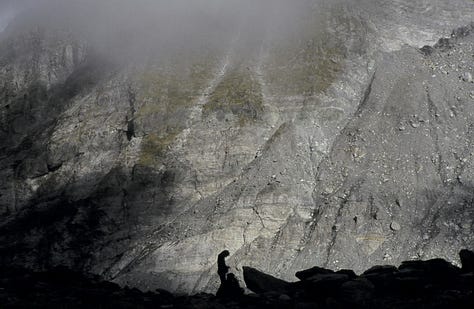
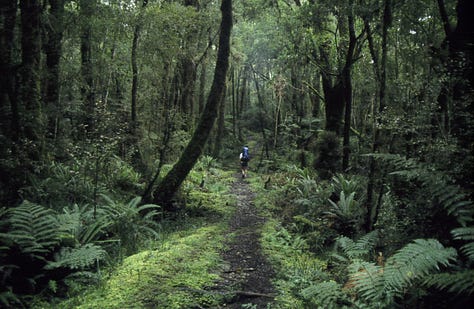
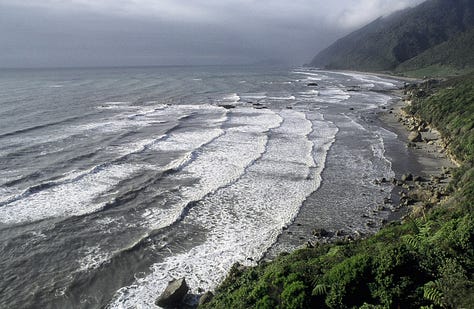
The South Island of New Zealand was a second home for me for a decade. I usually spent two months a year - after several months in Antarctica - exploring and tramping through the astonishing variety of landscapes packed into that island. I became familiar with its high glaciated peaks, fern-rich temperate rainforests, rain-drowned fjords, rolling hills, and wild undeveloped coasts. I don’t think my experience gives me any particular insight into this story, but it does give me enormous affection for the old Edenic world the nation is trying to partially revive.
And there is so much to save. I’ll focus here on wildlife, birds especially, but as always any conversation about species conservation is a depiction of entire landscapes under siege.
Imagine two huge green islands (and hundreds of smaller ones) populated almost entirely by birds and insects. That was the pre-human Aotearoa New Zealand. The only native land mammals are three bat species. No felines, canines, mustelids, or primates. No sheep, horses, pigs, cows. There are only three species of native frogs (unchanged in 70 million years), while reptiles are limited to a host of small gecko and skink species, and one remarkable 200-million-year-old survivor from the age of dinosaurs, the tuatara.
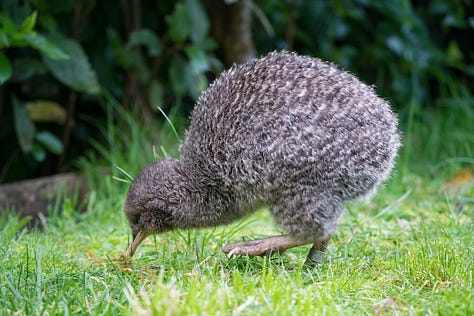
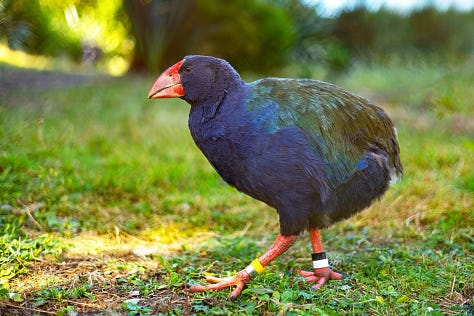
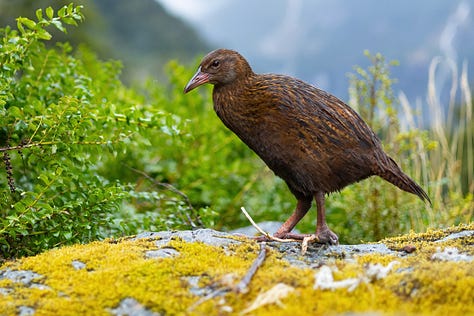

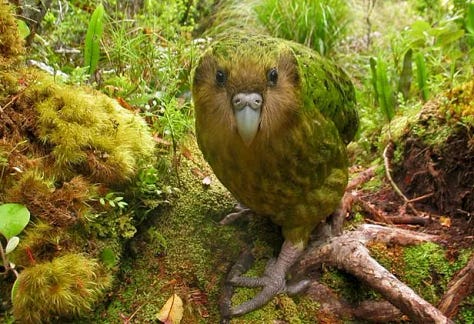
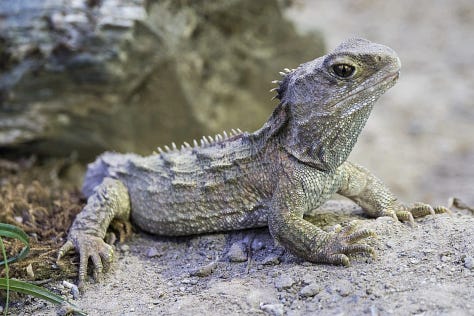
Imagine walking through that green world full of birdsong and birds. Perhaps the first thing you’d notice is that many of them were walking too. Over eighty million years, in the absence of mammals, 32 New Zealand bird species reduced their ability to fly or became entirely flightless. The ground was a safe and fruitful place to be.
The flightless birds included kiwis, takahes, wekas, three species of wrens, and two ducks. But perhaps the most noticeable feathered walkers in this avian idyll were nine species of moa, ostrich-like birds, the largest of which stood 12 ft (3.7 m) tall and weighed up to 500 lbs (230 kg). The moa were preyed upon by Haast’s eagle, which could weigh up to 40 lbs (18 kg) and was likely the largest avian raptor the Earth has known.
Now imagine this green world invaded 700 years ago by the first people, the Māori, arriving from elsewhere in Polynesia. The moment they stepped ashore they became this paradise’s apex predators, with nothing on land to fear but each other. Within 150 years, the massive (and tasty) moa and the Haast’s eagle were gone. Many other birds (and a sea lion) went extinct too, eaten either by the new settlers or by the kiore (Pacific rats) and kurī (Polynesian dogs) who arrived with them in their great canoes. The rats in particular became voracious predators of the birds and bird eggs, geckos and skinks, tuatara and invertebrates that for the previous 80 million years had nothing to fear.
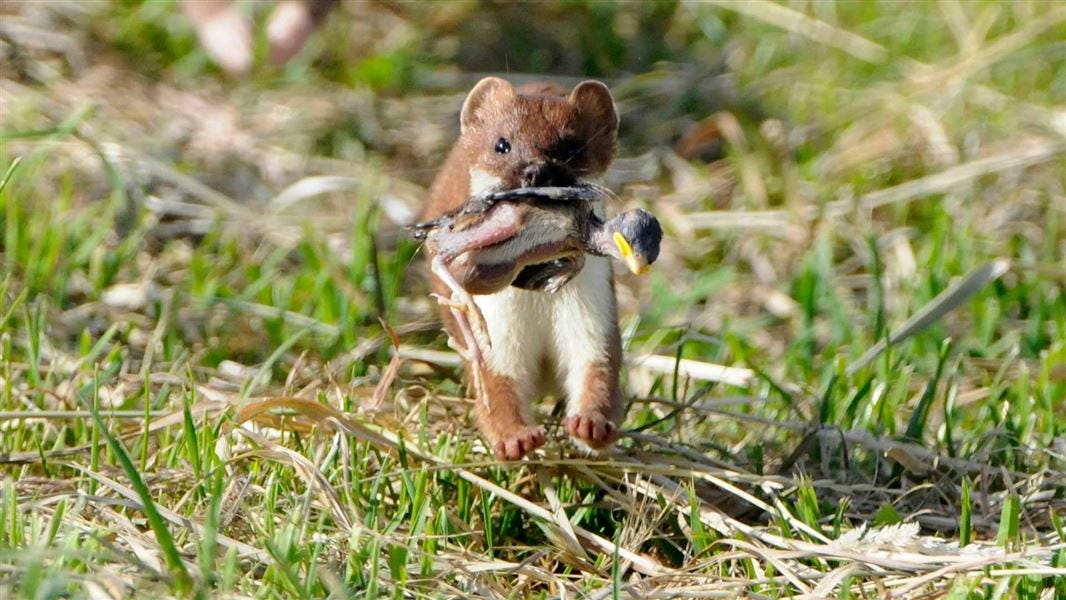
But the greater apocalypse arrived with European traders, whalers, and sealers in the late 18th and early 19th centuries, and then (mostly) British colonists in 1840. The colonial population exploded from 1,000 in 1831 to 500,000 in 1881. Alongside the upheaval of Māori life, the natural world of Aotearoa New Zealand was quickly and permanently disrupted by forest clearing for grazing, farming, logging, and development, and by the rapidly spreading populations of introduced predators.
The long list of introduced species is a sad litany of hubris and error. Some arrived as hitchhikers (rats and mice) or pets (feral cats and hedgehogs), some were brought in so that hunters would have something exotic to shoot at (Himalayan tahr, wild goats, and seven species of deer), some were imported to start a fur industry (rabbits, Australian possums, wallabies) but which spread like a pestilence, and some were introduced to control other invasive species (ferrets, stoats, and weasels to hunt rabbits) but chose instead to eat more native birds.
As summarized by a 2020 government document, “Towards a Predator Free New Zealand,” the nation’s landscapes have lost far too much of their native life:
At least 60 birds, three frogs, seven vascular plants and an unguessable host of invertebrates are gone forever. The conservation status of over 9000 native land species assessed reveals that more than 3000 of these are threatened with or at risk of extinction, with thousands more classed as data deficient (meaning we don’t know enough about these species to assess their conservation status). Each year over 25 million native birds are killed by non-native predators.
There are only 16 flightless species left, and they all exist in protected, remnant populations. Nearly every other native bird species is threatened or endangered too. NZ is a seabird capital of the world, and all nesting seabird species - from flightless penguins to soaring albatrosses - have suffered badly. Mostly this is from predation on adults, chicks, and eggs in nesting colonies, but research has shown that just the presence of a single predator (cat, rat, weasel, ferret) can disrupt breeding success. Likewise, a single feral cat can devastate a bat colony.
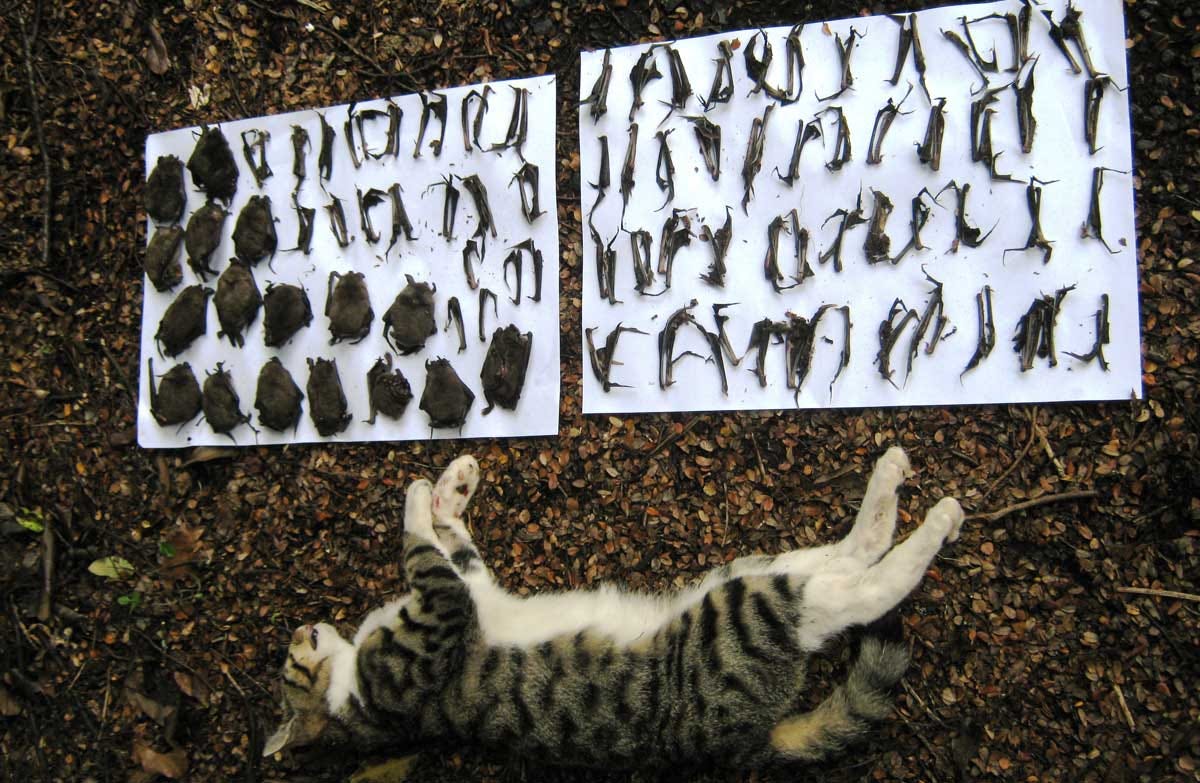
New Zealand has the briefest human history of any country, but the ecological impacts from both waves of arrivals have been extraordinary. Today, the paradise of just 700 years ago suffers from radical habitat loss, widespread diminishment and disruption of plant and animal communities, and dozens of extinctions. It is, in other words, in a similar condition as much of the rest of the world, here in the early Anthropocene and a half-century after the Great Acceleration of our impacts.
But New Zealand is also remarkably different than most of the world, in a few important ways. First, it is home to an rich trove of species found nowhere else. Second, it can draw a clear line between who belongs to the land and who does not. A weasel is not a weka, and a feral cat is not a native bat.
Third, there is a strong coalition in the Pākehā (non-Māori New Zealanders) and Māori communities to undo some of the damage, restore some wild landscapes, and protect many of the threatened species. For the Māori, it’s more than “environmental”; it’s also about whakapapa (kinship with one’s genealogy and place), and about respecting these non-human relatives who nurtured their ancestors. As “Towards a Predator Free New Zealand” put it,
The traditional Māori view of the environment is that we are connected through whakapapa and linked by the threads of a woven universe held firm by an inextricable bond between people and nature. An ecosystem is like a spider web: strong and resilient when all its strands are intact, but when a strand is broken the web is weakened and the integrity of this intricate web is diminished.
I should note that, though I don’t know the first thing about New Zealand politics, all environmental policy is political, and thus government interest in the great work of a national conservation plan waxes and wanes with administrations. As the article at the heart of my “Language Nests” essay noted,
the current coalition government is actively hostile to both te reo and environmental protection. Once again, we are marching in the streets. But governments come and go…
The great work of New Zealand conservation began decades ago as desperate and extraordinary efforts to protect remnant populations led to the creation of safe havens on small offshore islands. Predator Free NZ Trust, a charitable entity supporting predator control programs, provides an excellent brief history of eradication efforts, but I want to pay some homage to it here.
Beginning in the 1960s, rats were slowly and laboriously cleared from a few small islands with the widespread use of poison baits. Bird populations (and plant communities) immediately thrived in the absence of predators. For the first time, biologists knew for sure that eradication was crucial to conservation. In 1985, a 420 acre (170 hectare) island off of Fiordland that had been infested with rats for decades was cleared in 22 days with 743 bait stations checked and rebaited daily. By the 1990s, through the use of more effective poisons and aircraft (small planes or helicopters) to spread them, larger islands could be cleared. A nearly 5000 acre island (2000 hectares) was declared rat-free after two years, “and the number of birds on the island was booming.” In 2006, after a remarkable five-year project that killed an estimated 200,000 rats, the nearly 28,000 acre (11,400 hectare) Campbell Island (New Zealand’s southernmost island, in sub-Antarctic waters) was safe for native wildlife as well.
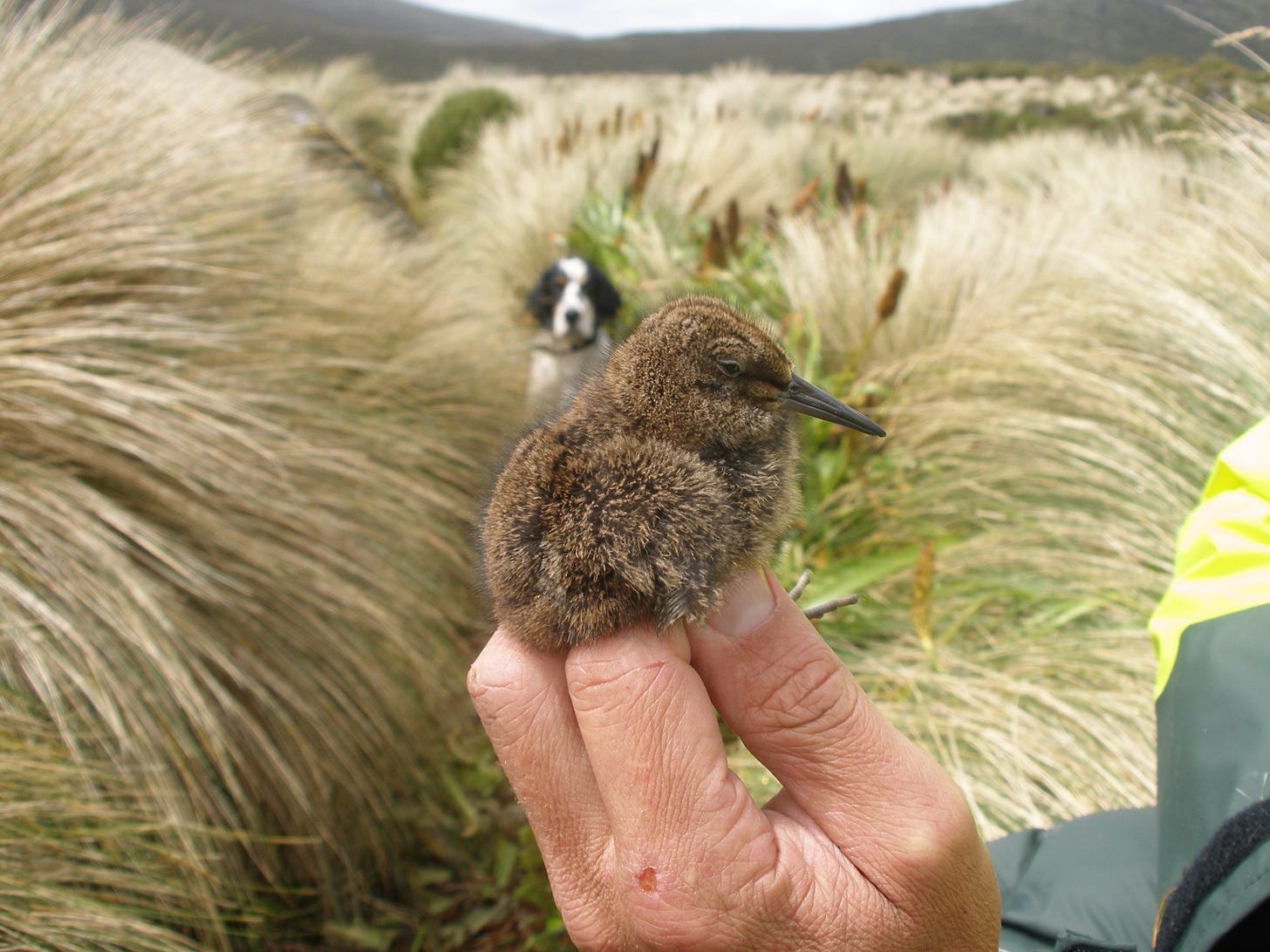
More than 300 New Zealand islands are now free of rats and other invasive predators. The importance of this island work cannot be overstated. Decades of predator-control experience has led to better understanding of the target species, of the costs involved, and of more effective and humane eradication strategies. New Zealanders have become global leaders in predator eradication for wildlife restoration.
More importantly, the work protected and revived island ecosystems and provided safe havens for species disappearing on the mainland. Threatened remnant populations were moved to islands to allow them to thrive and rebuild their populations for further spread to other islands. Kākāpō, for example, were once widespread throughout New Zealand - perhaps one of its most common birds - but now live only on two small islands. Likewise, many of the remaining takahē were moved to offshore islands to help rebuild their numbers. Now, in the latest and greatest step of this grand scheme, a few of these birds are being released into newly-cleared havens on the two main New Zealand islands.
That mainland clearing work, though, is just beginning.

And that work has a name: Predator Free 2050. The goal is to eliminate, from the entire nation, all rats, stoats, weasels, ferrets, and possums in the next 25 years. For more reading, check out a DOC brochure, an overview from Predator Free NZ Trust, and again the NZ government’s policy document, Towards a Predator Free New Zealand.
Predator Free 2050 is an incredibly ambitious, hopeful plan for a disrupted Eden. It is also a multi-generational act of brutality against animals who by no fault of their own are thriving in the wrong place. Rats, possums, ferrets, stoats, and weasels are intelligent beings who raise their young with care and, in principle, are as woven into the fabric of life as we are. They can be lovable, and they deserve our respect.
And yet, the 2050 plan is about love and respect as well. As an ecologist explained in a recent National Geographic article about Predator Free 2050,
there are two kinds of animal welfare to consider—that of the predator and that of the prey. The harm that predators inflict on native species far exceeds the harm we inflict in managing them, he argues. “The presence of mammalian predators in Aotearoa is an historical environmental injustice,” Russell said. “Just as we try to correct historical social injustices, I believe we should try to correct historical environmental injustices.”
There are, of course, limits to the plan. Most of the landscape will remain transformed. Humans, their livestock, and their pets aren’t going anywhere. The Himalayan tahr, wild goats, and deer species that keep hunters cheerfully tramping through the NZ backcountry will be controlled but not eliminated. Even if feral cats are largely eliminated, house cats will persist. There is some doubt whether the most pervasive predators, like rats, will be erased completely.
Next week I’ll explore the details and ethics of predator control of Predator Free 2050, and of the effort to make the work cultural rather than merely technical. When, for example, was the last time your kid’s school actively supported the trapping and poisoning of invasive species? And what better expresses a nation’s love for a flightless bird than when its air force uses it as a symbol?
Finally, it’s worth considering that if the people of Aotearoa New Zealand are willing to work over several decades to protect, rewild, and renew aspects of a natural world run through the colonial shredder, then I think the rest of us can shoulder the burden of doing similar work where we live. The work will be different, but the goal is much the same: to reduce the obvious harms and allow some of the old Edenic remnants to thrive amid this new, strange world we’re making.
For now, the least we can do, especially here in the U.S., is push back against the rats currently gnawing away at the nest of democracy.
Thanks for sticking with me.
In other Anthropocene news:
First, a biodiversity/extinction story and an op-ed on political/environmental communication:
From the Breakthrough Institute, “No, Offshore Wind Will Not Drive Right Whales Extinct,” an astute ridiculing of an idea that’s gained far too much credence. The right whale story is complicated, as most extinction stories are, and I am often annoyed by Breakthrough Institute thinking that puts cleverness before compassion, but this is a largely excellent piece that dismantles some very shallow and disingenuous public discourse. The threats to right whales are largely from ship strikes, entanglements, and changes to the ocean food web. There are impacts from the offshore wind industry - ship traffic, construction noise, etc - but this is a fraction of the larger ship and noise problems. For more on this, read
’s thorough follow-up to the Breakthrough piece, and read my three-part series on ocean noise.Speaking of
, here’s an excellent recommendation from him, by David Fenton at FrameLab, on how to counteract the flood of aggressive, effective anti-environmental disinformation from the Trump administration. Progressives - despite having the better message - have failed miserably in their messaging and need to initiate a long-term strategy now. Fenton focuses on climate, but it’s really a larger point about communicating about the fate of life on Earth. Here are two of his great points:We suffer from what Lakoff has dubbed “the Enlightenment fallacy” — that great ideas sell themselves. They don’t. We are now seeing, in real time, the consequences of this failure across almost every issue of importance…
Meanwhile, the extreme right has built up a network of digital media institutions and influencers. This is how Trump won. The pro-democracy, pro-planet side has mostly not done this. The extreme right has a unified echo chamber to stay on message relentlessly. We have a progressive Tower of Babel. The right prioritizes simple messages and images — and the means to deliver them repetitively, as cognitive science teaches. We tend to love complexity and hate repeating ourselves.
And three stories connected to the California fires:
From Zoe Schlanger at the Atlantic, why a modern house fire is really a toxic petroleum dumpster fire. So much of what we surround ourselves with is plastic or plastic-coated or contains other petroleum byproducts, and when they ignite they burn fast and release “not just hydrogen-cyanide gas but also hydrochloric acid, dioxins, furans, aerosolized phthalates, and a range of other gaseous contaminants broadly known as volatile organic compounds.” Residents, neighbors, wildlife, and especially firefighters are exposed to toxic clouds of smoke and gases. A standard vinyl/foam couch, an expert explains, is “akin to a block of gasoline.”
From
at The Climate According to Life, a really important and well-written big-picture analysis of how the Mediterranean-type climate of Los Angeles has been deprived of its moisture over the last two centuries by replacing the well-tended wetlands and forests of the Tongva people with the concrete wasteland of today. Be sure to read through to the end to learn about “the LA basin’s most hopeful acre.”From Inside Climate News, the speed, frequency, and intensity of California wildfires is likely outpacing the ability of wildlife to adapt.
And four climate/energy stories:
From Inside Climate News, the AI and data center boom may not be quite the energy-sucking catastrophe it has threatened to be. The news out of China of an AI that is as effective as U.S. products but at a tenth of the energy expenditure has sent markets into a tizzy.
has a great commentary on this as well called “We Interrupt the Ongoing Crisis for a Smidgen of Good News.”From the Guardian, a third of the Arctic is now emitting rather than storing carbon. Arctic permafrost contains vast amounts of stored carbon. As the atmosphere warms, the soils warm, and microbes begin digesting that stored carbon and emitting CO2. This process is one of the large-scale feedback processes that can make warming much harder to slow down.
From Grist, “The 8 talking points fossil fuel companies use to obstruct climate action,” a good analysis of how these (and related) companies use social media in a coordinated fashion to shape the national conversation and policy. What I found especially noteworthy here was the coordination between the extraction companies and the plastics and agrichemical industries:
In a new paper published last week in the journal PLOS Climate, researchers suggest that climate communications from these three sectors — oil and gas, plastics, and agrichemicals — are “aligned and coordinated … to reinforce existing infrastructure and inhibit change.”
From the AP, the solar sheep grazing boom has hit Texas, where like across the U.S. there’s a steadily increasing use of sheep to mow under large solar arrays. It’s the most common form of agrivoltaics. The jury is still out on whether it’s the best use of the land under the panels, but “it’s probably the biggest opportunity that the sheep industry had in the United States in several generations.”
And finally, three PFAS stories:
From the Times, the EPA has finally offered a warning about impacts to human health from PFAS chemicals that contaminate sewage sludge being used to fertilize U.S. farms. Not much will change as a result of this warning, but the far-too-slow progress toward a national reckoning with a terrible and ubiquitous class of chemicals has begun.
From Undark, in “The Uncertain Multigenerational Implications of PFAS,” a child born in a badly-contaminated Massachusetts town develops a rare kidney condition, and his mother is caught between a lot of desperate research and a lot of guilt:
PFAS contamination is not abstract; it is tangible and shows up in the little bodies that we create. My son’s health is stable, but his illness is something we will need to navigate for years to come. I will pay attention to the things that can be monitored, such as cholesterol levels and kidney, liver, and thyroid functions, and I will continue to support his immune system. I will also try to make some peace with myself so that my guilt does not crowd out my ability to show love. To my son, this life is normal, and perhaps for all of us living with the effects of PFAS, it is also now our new normal.
And in Europe, the Forever Pollution Project is a coalition of journalists and experts who have methodically and comprehensively mapped PFAS contamination across the region. It’s an extraordinary body of research. The second phase of their work, the Forever Lobbying Project, has now been released. It exposes
the lobbying and disinformation campaign orchestrated by the chemical and plastic lobbies to prevent the ban of these “forever chemicals” in the European Union. Fighting to keep their “chemical business as usual” with misleading, scaremongering arguments, polluting industries are shifting the burden of environmental contamination onto society, threatening the economic stability of European nations.




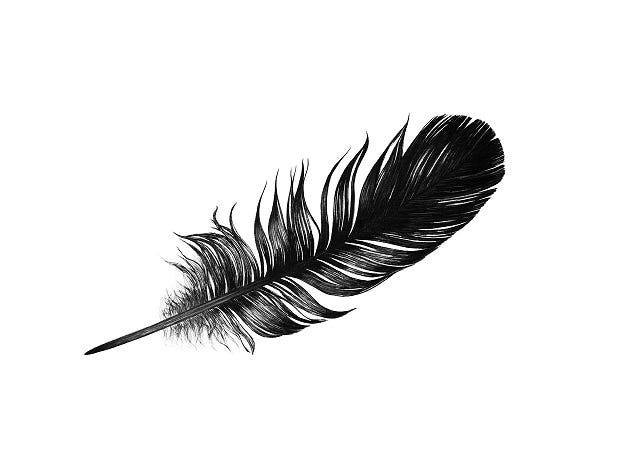
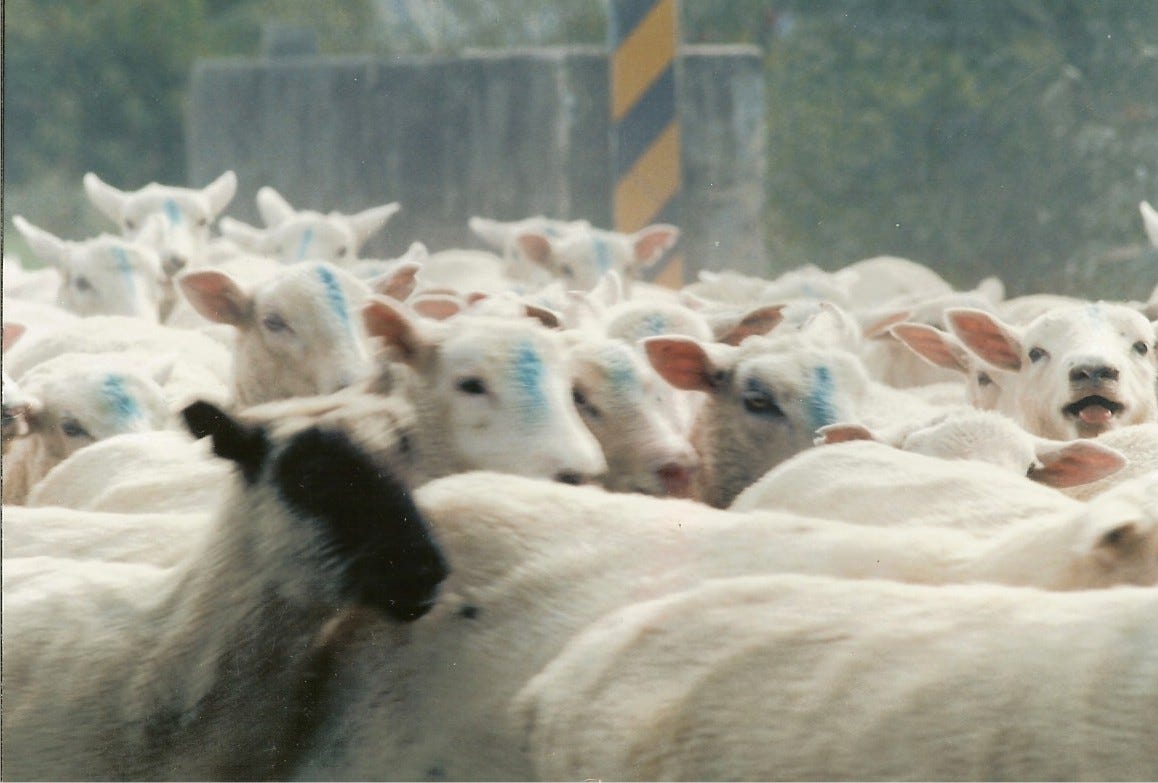

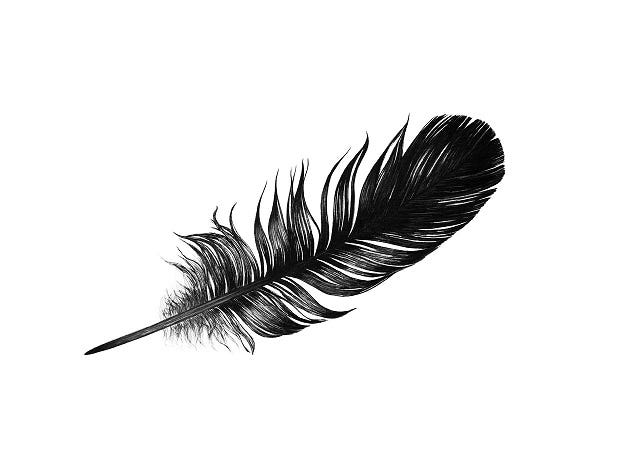
I have never been to New Zealand at all and I keep thinking about it and its stories of extinction and conservation from my comfortable chair in the colonizing nation.
I have a strong memory of sitting in the David Attenborough Building in Cambridge, watching a video of a helicopter scattering pellets of warfarin-laced bait from two huge hoppers all over the moors of Chatham island. This was after we'd heard the incredible story of its surviving snipe. The presenter, a senior conservationist, was triumphal and so was I, in half of my brain. I can remember thinking 'it's actually possible, we can actually win here, we can get rid of every last rat.' And *at the same time* thinking 'how can we possibly support this - I mean just look at it.' I have a dim idea what warfarin does, and really a dim idea is enough.
I didn't want to say it and I still don't but I was thinking 'is this really all that different to doing this kind of thing to humans?' And, after all, the reason conservationists don't do that kind of thing to humans isn't because it wouldn't be good for biodiversity.
And then, another cause of cognitive dissonance, there's the massive extinctions caused by the arrival of the ancestors of the Maori. At the same time, the Maori are cast in the role of the bearers of an indigenous wisdom about the relationship between man and nature which can save us. I'm not saying that is bad or inappropriate. As I say, I have never even been to Aotearoa and have never spoken about these things to a Maori person. What do I know? I can see ways that both of those things can be true, but stories are needed to explain how they can both be true and it doesn't seem like we're telling those stories.
All this makes me doubt that we really do need to prioritize simple messages and images and repeat them relentlessly like the right do. After all, Trump - and also Musk now, I think - don't seem to actually care whether their simple messages are in any sense true. They can talk *only* about things that are going to cause the biggest reactions because they just need to harness emotions in a way that will give them power.
The best lack all conviction while the worst are full of passionate intensity.
Thank you for this thoughtful look at NZ's work to remove at least some of the non-native predators. It's exciting to see it happening in a context of cooperation between NZ's Maori and the later-comers, and to see it continuing through different political administrations. I also very much appreciate your sensitivity to the issues of "killing for good," something I think about a lot as I work to limit invasive plant species and the havoc they wreak on the webs of living ecosystems here in the Rocky Mountain West. There's a lot to learn from what the efforts in NZ, and honestly, it's a source of hope to me to see the longevity and effectiveness of this work.